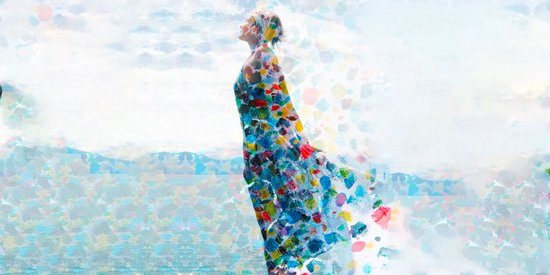Hello, my beautiful little flowers! Today, we are going to talk about pansexuality. As the title suggests, it is about making no distinction about the gender or the sex of a particular person! Open your ears up wide for this most interesting little article!
Pansexuality VS Bisexuality
The terms "Pansexuality" and "Bisexuality" are often confused or misunderstood, especially regarding their differences. For this, a small breakdown of the term “Pansexuality” is in order: “Pan” means “everything” in Greek and “sexuality” encompasses sexual behavior, broadly speaking. So, pansexuality is somehow devoid of a distinction between the male and the female sexes. In practice, being pansexual means that you are attracted to a person for their personality, without paying any attention to their gender or their sex.
The word "pansexual" is absolutely not new! Its appearance dates from the 20th century but it was abandoned, so as to give way to the terms, "homosexual", "heterosexual" and "bisexual". Then it was reused by the "queer" movement, bringing together all the so-called "unconventional" sexual identities, i.e. not belonging to heterosexuality and to cisgender (an individual having an identity of a male or female gender at their birth, the opposite of a transgender person).
Let's go back to the difference between "Pansexuality" and "Bisexuality." “Bisexuality” is characterized by an emotional and/or sexual attraction towards people of the same sex and/or both genders. In comparison with “Pansexuality”, “Bisexuality” therefore pays attention to the gender and sex of the person.
Naming your sexuality, a tool to fight a feeling of exclusion?
After carrying out all kinds of interviews, we have got many answers.
According to Leo, "naming one's sexual orientation can allow some people who feel misunderstood or torn with their own feelings, to find a sense of belonging to a community" and for Louise, "this description helps to get out of a feeling of exclusion, which then allows you to feel less lonely”. So really, what better than a word to convey your sexual orientation in the simplest possible way? Having received numerous testimonies, we reach the conclusion that this word describing sexuality has been generally beneficial for those concerned.
However, some testimonials did not follow suit, such as that of Claire; "I don't see the point of inventing new words to create even more boxes," or that of Juliette; "It's just a fad, it will pass." Every individual is different, so if one person needs to name their sexual orientation, which allows them to identify themselves in a concrete manner, it’s up to them. On the other hand, if an individual does not feel the need to put a name to his or her sexual orientation, no one can force him or her to state that he or her belongs in such a box or category. Accept the vision of the other person and have tolerance!
The representation of “Pansexuality”
The deconstruction of clichés and the democratization of pansexuality are only in their infancy. At school, sex education lessons do not always talk about freedom of choice regarding sexual orientations. Often the lessons are based on heterosexual orientation, being the norm of our current society. However, other orientations do of course exist, and, for the sake of education and equality, the education system should make a point of explaining that there is not only one possible orientation.








